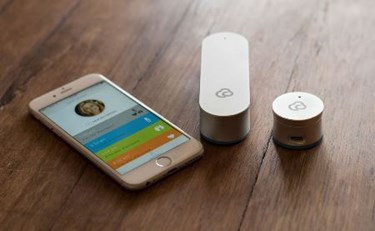CliniCloud Allows Doctors, Patients To Monitor Vital Signs Through Smartphone Apps

CliniCloud, a company developing a mobile kit for monitoring temperature and cardiovascular sounds, announced that it has received $5 million in seed money from new investors and plans to market its kit at Best Buy stores this holiday season. The device allows patients to send their health data to doctors through a smartphone app, part of a growing trend of at-home health tools expected to revolutionize primary care.
The company was founded by two Australian doctors, Hon Weng Chong and Andrew Lin, who came up with the idea during medical school as a way to address the prevalence of childhood pneumonia in developing countries. In 2012, the entrepreneurs won Microsoft’s Imagine Cup, awarded annually to students developing technology to address unmet global needs.
Over the past three years, CliniCloud has developed into a kit that includes both a stethoscope and an infrared, contact-free thermometer. The connected smartphone app walks the patient through each step of the check-up process and instructs at-home caregivers how to place the stethoscope for accurate readings, no medical training required. Patients can also video conference with licensed doctors over video chat if they need further assistance.
In February, Digital Trends reported that the start-up was seeking additional funding through crowd-sourcing options. Six months later, CliniCloud received $5 milllion in final stage funds from Chinese investors Tencent and Ping An Ventures, and has finalized negotiations with Best Buy to market its product in the U.S.
Hon Weng Chong told NT News that the U.S. has a much bigger market and is more receptive to innovations in telemedicine and, though he remains hopeful for an eventual commercial launch in Australia, Chong said there remain too many technological and bureaucratic barriers. The U.S., he said, “is just a much more mature telemedical market.”
In July, Health IT Outcomes reported that the Cleveland Clinic would launch its MyCare app, which will allow patients to pay $49 dollars for a video conference with a doctor, a service available 24 hours a day.
Peter Rasmussen, the Cleveland Clinic’s director of distance health, told the Cleveland Plain Dealer that the program would help patients address medical issues before they spiraled out of control. “We want to head off concerns before they become so serious that [people] end up in the emergency room,” he said.
Similar programs are cropping up nationwide, but Lin told Digital Trends they’re missing a critical set of tools. “What we saw missing is really the clinical input stuff that makes the home setting more like a physicians’ office. Give them the inputs, the tools, for objective measure,” he said.
A recent report released by Goldman Sachs indicated that the U.S. healthcare system spends $200 billion annually — one-third of all U.S. healthcare costs — on chronic illnesses such as cardiovascular disease, asthma, and diabetes. Monitoring these patients remotely, said the report, would cut a lot of needless spending. In total, Goldman Sachs estimated that embracing telemedical solutions could reduce U.S. health spending by over $300 billion.
